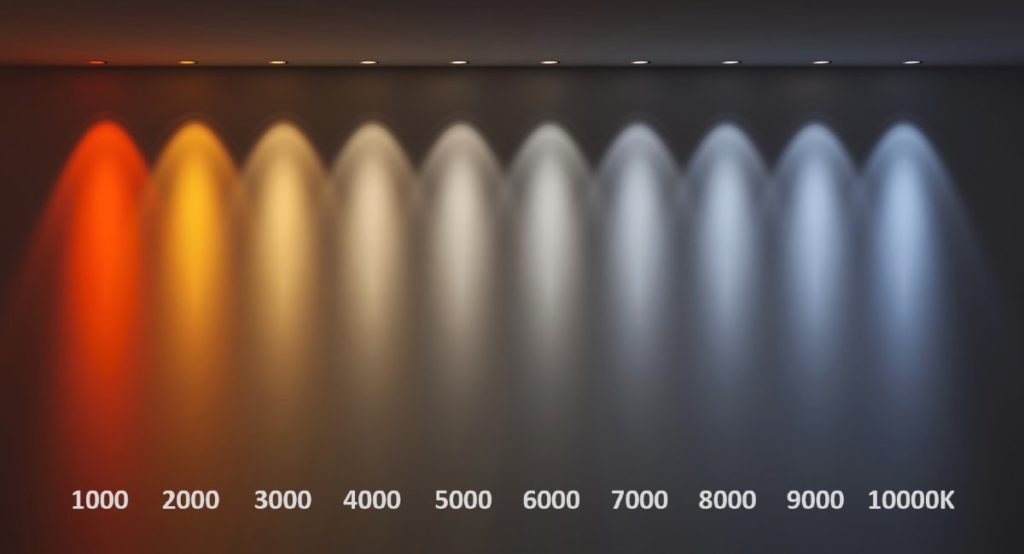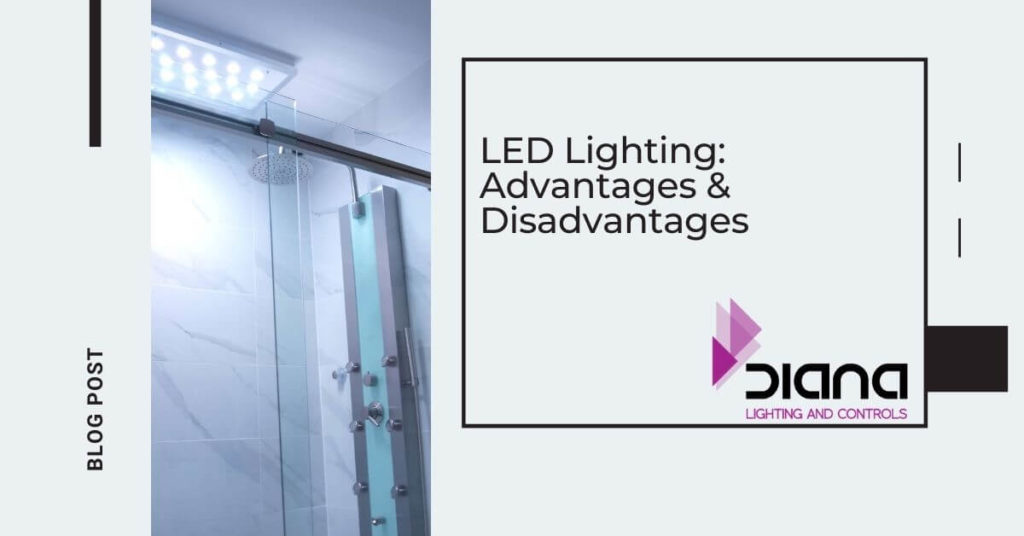Reduced power consumption, increased efficiency, improved longevity, superior lighting quality, greater versatility and customizability and more environmental sustainability are just some of the advantages of LED lighting. But what are their disadvantages and should you invest in converting your home or place of business to replace traditional incandescent lighting with LEDs?
In this article we will explore the advantages and disadvantages of LED lighting and provide you with the necessary knowledge to make a decision whether LED lighting is right for you.
Advantages of LED Lighting
Reduced power consumption and increased efficiency
LED light fixtures use significantly less energy compared to other more traditional light sources and therefore their efficacy is far superior. LEDs consume on average approximately 5-8 times less energy than regular incandescent lights for the same level of lumen output (brightness). Progress continues to be made in this area and we expect that lumen output will continue to increase beyond the current levels of 130 lumens per watt. Also, most of the energy consumed by LED lighting is directly converted to light while only very little energy is converted (lost) to heat. In contrast, most of the energy used by incandescent lighting is unfortunately converted to heat rather than light. Therefore, the efficiency of LED lighting is superior to incandescent lighting.
Depending on the size of your home or business, converting to LEDs may result in significant savings and will help you recover your upfront investment over a fairly short period of time. If you are environmentally conscious they are a great alternative for your home and in case you are running a business, using LED lights on your business premises will send a message to your customers that you are environmentally conscious and may help your image on the market.
Improved longevity
LED lights last longer than incandescent bulbs or fluorescent tubes. They do not burn out and, depending on the use, they can last up to 12 years. That means LED lights can last up to 40 times longer than incandescent bulbs and four times longer than fluorescent tubes when designed properly with a good heat sink. That gives you more peace of mind and offers higher value for your money.
Superior lighting quality
Unlike incandescent lights, LEDs are unidirectional. This means that LEDs emit light only in one direction which makes it easier for light to reach a desired area. This eliminates the need for deflectors or reflectors which are often used with traditional lighting fixtures to capture and redirect the omnidirectional light emitted. The amount of light that reaches the target area is significantly superior for LEDs compared to more traditional lighting and the light is also more uniformly distributed by LEDs.
Versatility
LEDs offer a wider spectrum of correlated colour temperatures (CCT) ranging from 1,000K to 10,000K as per the figure below while incandescent lighting generally ranges between 2,000K and 6,000K. What does this mean? The CCT dictates the colour of the light emitted with higher CCT values giving a brighter, cooler light. Lower CCT values are associated with a warmer, more yellow light. Therefore, depending on the desired use and application, it may be easier to find a perfect fit in an LED product lineup than incandescent.

Nevertheless, LEDs gave rise to better technology around lighting controls and automations and enabled certain applications that were never possible before. One such example includes the correlation of lighting with the circadian rhythm which is especially beneficial in retirement homes, hospitals or other places inhabited by people with various disabilities. With proper lighting controls, some LED’s have the ability to adjust their correlated color temperature throughout the day, feature that has been proven beneficial from a medical standpoint for various conditions.
Customizability
Due to the small shape of an individual LED, they can be arranged in various patterns and used to create a wider variety of lighting fixtures with various shapes that can fit a higher number of applications than traditional lighting. Examples include very thin under-cabinet lighting that can be unobtrusively installed in your kitchen, linear cove lighting fixtures that emit a perfect light with no darks spot, or custom linear lighting to elevate various design pieces in your home.
LEDs are also better suited for ambient lighting when different colour lighting is desired. RGB (red green blue) LEDs can emit any colour in the spectrum of colours and with the use of additional controllers can really elevate your home or office by matching the light colour to your mood or season.

Eco-friendly
Last but not least, LEDs are significantly more ecofriendly than traditional lighting. They contain no mercury and therefore pose little risk to our health and the environment.
Disadvantages of LED Lighting
Cost $$$
The cost to manufacture LEDs are higher and therefore, LED’s are more expensive to purchase than incandescent or fluorescent lights. However, as discussed above, the cost savings generated by LED’s over time and their longer lifespan will help recover and compensate for their higher costs.
More susceptible to failure if improperly designed
In spite of the fact that LEDs generate significantly less heat than traditional lighting, they still require a good heat sink to function properly and let you enjoy the benefits of their longer life. This becomes especially important in applications where the LEDs are built into various lighting fixtures such as ceiling lamps, linear lighting modules or under-cabinet lighting, to name a few. An undersized heat sink or lack of one altogether will not allow the LEDs to properly dissipate the heat generated and will significantly shorten their lifespan. In other words, LEDs are more sensitive to an improper design and no money should be spared in this area if you want to be able to enjoy all the benefits of this technology.
Incompatibility with traditional lighting controllers
LED light sources are often incompatible with controllers such as dimmers that may already be installed in your home and which were designed to operate with incandescent lighting. Due to a different dimming method used by LEDs, if your preference is to be able to dim your lighting fixture, you will require an additional investment in an LED-compatible dimmer. While this does not represent a large increment cost, it is definitely something to consider as you start planning for a conversion of your home or office to LEDs.
Built-in design
If you are considering the purchase of a complete LED lighting fixture and not just the replacement of a traditional light bulb with an LED light bulb, it is important to note that such lighting fixtures generally do not allow for the replacement of the light source if something goes wrong. The LEDs are built into the lighting fixture and any defects or issues that may arise in the future may result in the need to replace the complete lighting fixture or costly repairs such as the replacement of the driver(s). This will not only be inconvenient but may also be costly.
Conclusion
LEDs have been around for a few years now and they are here to stay. As a more environmentally sustainable solution than traditional lighting, LEDs are far superior to incandescent or fluorescent lighting and they should be considered in every home. Their superior efficiency, light quality, longevity and versatility make them a better candidate in today’s society than the more traditional light sources. If you have not yet considered switching your home to LED lighting we highly advise that you do so and start enjoying the benefits presented by this technology.
Give us a call for any questions you have about lighting
We are custom lighting manufacturing specialists and lighting is our passion. We offer a wide range of high-quality LED lighting products designed to fit a variety of applications.
Give us a call at (647) 202-9126 for a FREE consultation and quote.

